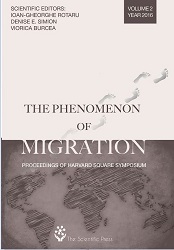Narrative Migration between Subjective and Objective in the Hallipa Series: Trademarks of Modernism
Narrative Migration between Subjective and Objective in the Hallipa Series: Trademarks of Modernism
Author(s): Simona Liutiev
Subject(s): Language and Literature Studies
Published by: Scientia Moralitas Research Institute
Keywords: reflector–character; time consciousness; narrative suspension
Summary/Abstract: Wishing to modernize the Romanian novel, Hortensia Papadat Bengescu creates a writing marked by narrative inconstancy and multiple stylistic formulae. Over the aesthetic background of balzacianism, naturalism, proustianism, expressionism, decandent–existentialism, alternating fresco with details, she uses impressionist techniques, mythical projections, archetypes and symbols that converge around a heteroclite stylistic level, so that reading of her novels plays a soteriological role. The reader is engaged in a hermeneutical labyrinth that will point out profound significance. Bengescu often justifies the stylistically changes with the reflector-character’s mood shifts or psychic faculties: intuition, reflection, emotion. After the first novel of the series, the author cannot risk an introspective prose; the omniscient narrator provides the necessary elements so that the reader will be able to understand the situation. The main function is given to the account, the consciousness conditions are thoroughly analyzed, and the lack of plot is grammatically suggested by using the past perfect, the tense of suspending action. Except for the first novel, where the reflector-character doesn’t contest her perceptions, in the next novels these perceptions are constantly replaced or subdued by a neutral narrator. But, above all, one can identify a narrator who chaffs, debates, borrows and lends others’ vocabulary. The importance of chronological evocation is diminished due to the time-consciousness, linked with Bergson’s concepts of time and duration, the uninterrupted stream, those moments of expansion or contraction accordingly with the individual meaning. Yet, the watchword is flashback: the characters recall different events, so the present tense is put in the second place. The ellipse is very important, the “narrative delay” (Umberto Eco) making the past more current than the present and leading to similarity with Proust’s writing. The Janus–faced time is recurrent at the characters’ and narrator’s speech level and brings the author’s style closer to Thomas Mann’s. It is also noticeable the idea of human dissolution in time joint to the decadent vision of waving or undulating time.
Book: The Phenomenon of Migration
- Page Range: 125-139
- Page Count: 15
- Publication Year: 2016
- Language: English
- Content File-PDF

